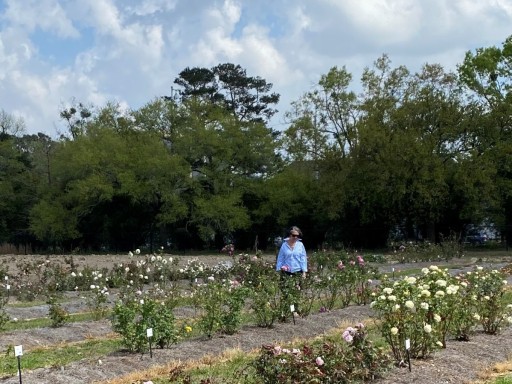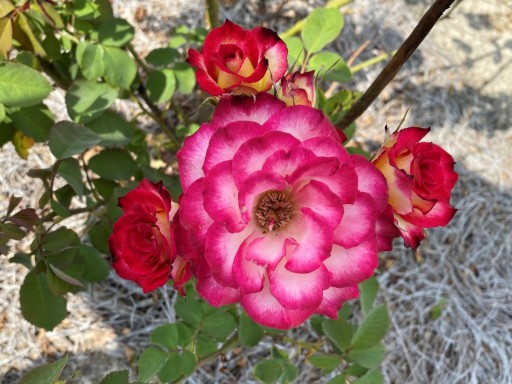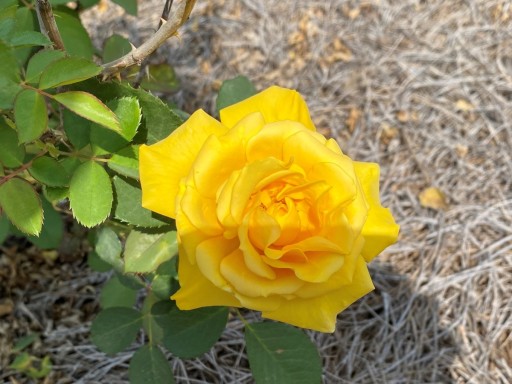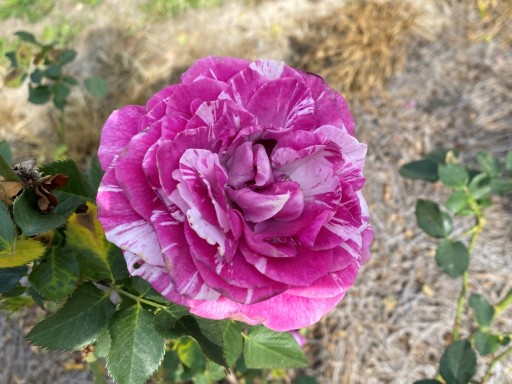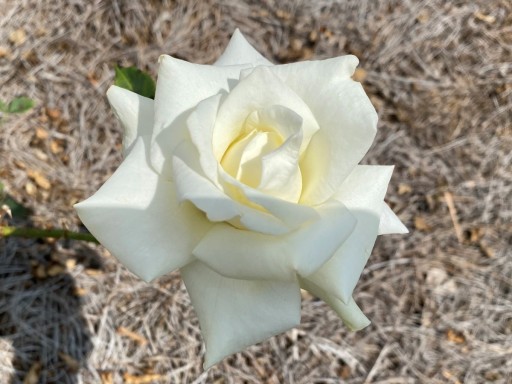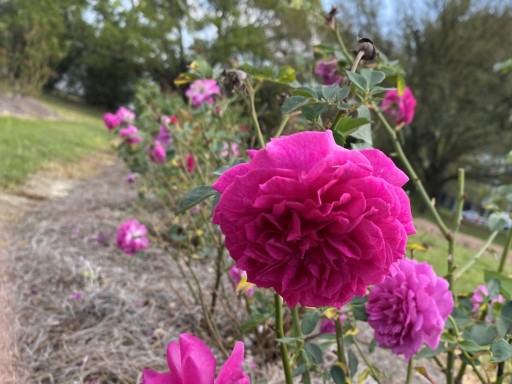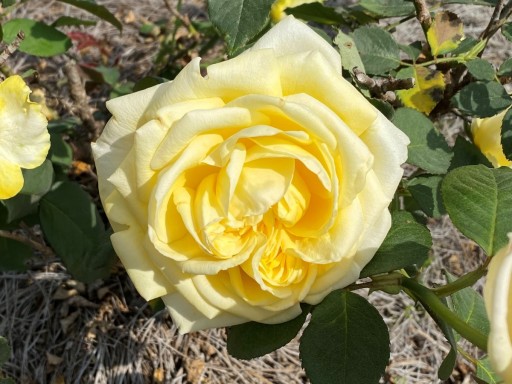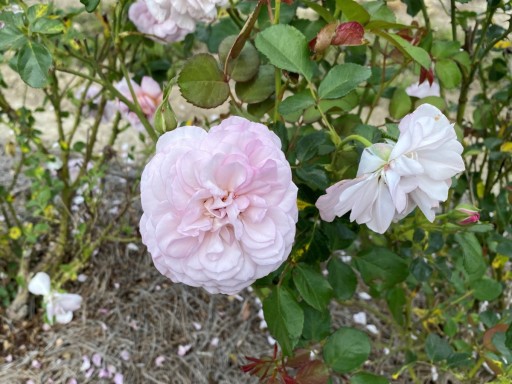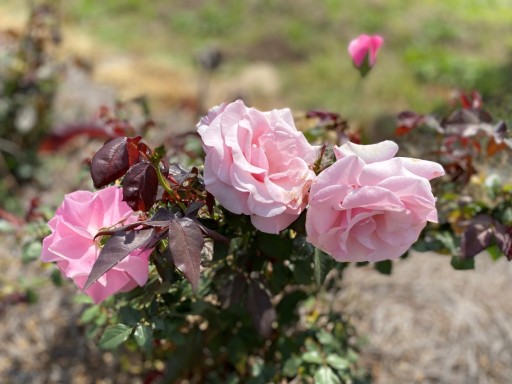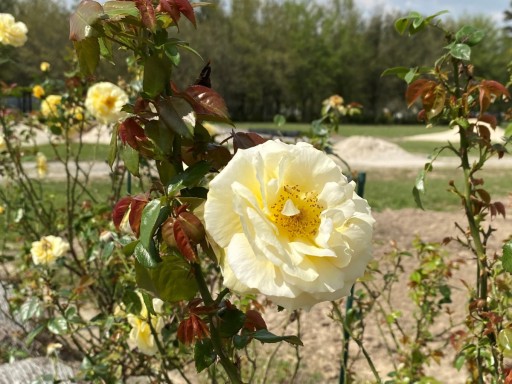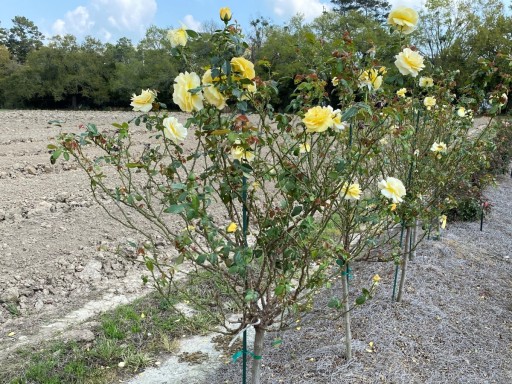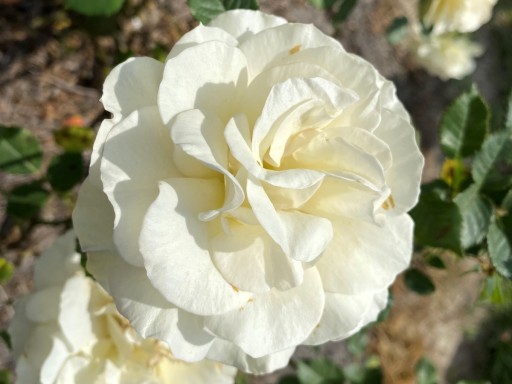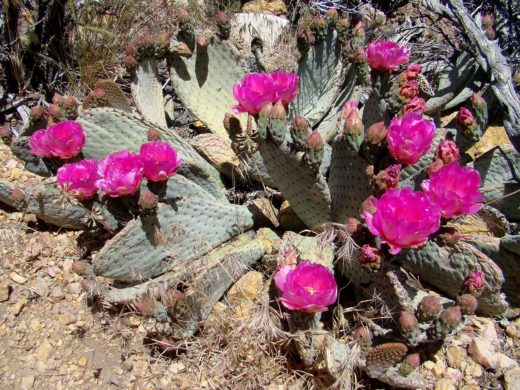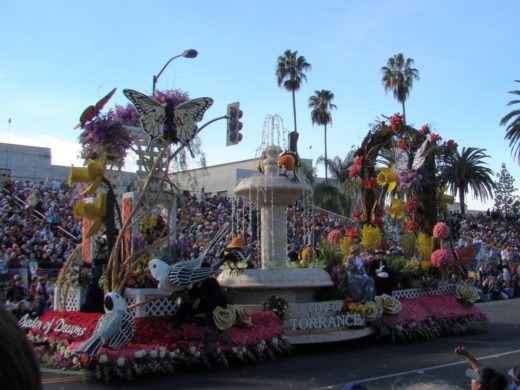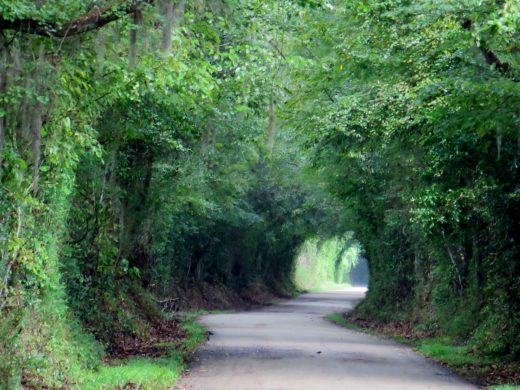Roses, Roses and More Roses
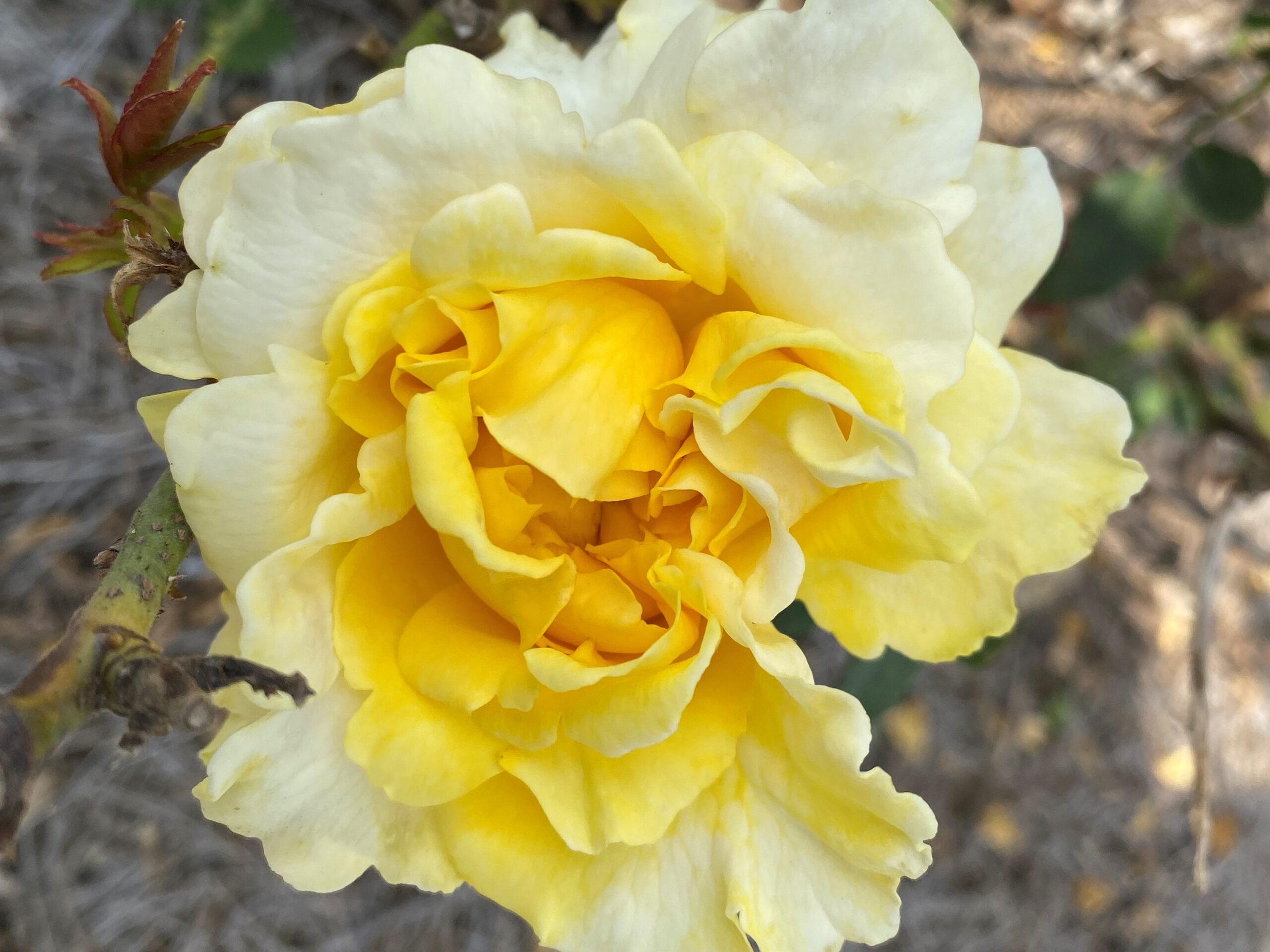
I love roses, they are one of my most favorite flowers. When I was a little girl, our next door neighbor had an expansive rose garden. What a treat when Mrs. Ikenberry would cut a rose and give it to me. It was so pleasant to just go outside and see beautiful roses eveywhere in my neighbor’s yard. Growing roses sucessfully is a rather tedious and precise process; I have never been successful growing this flower myself. But I still love rose gardens. So, I was very excited when I learned that LSU is involved in research to grow, document the genetics and preserve many of the old, historical roses which are no longer available commercially. This venture is in conjunction with Jackons and Perkins, one of the premier, commercial rose growers in the United States. Recently, the public was given a presentation and tour of these research gardens.
I was not dissapointed. The roses we saw were unique in size, color and growth characteristics. Breathtaking is the best adjective to describe these roses. This floribunda rose is multi-colored
I have never seen such brillant yellow rose. This is a grandifloria rose called, “Alex’s Lemonade Stand.”
Burden Museum and Gardens
The rose research farm is located on the grounds of the Burden Museum and Gardens. In the middle of Baton Rouge, surrounded by urban city, it is a 440 acre serene garden and farm. The farm is tucked away from view of the Interstate and surrounding streets. It has magnificent live oak trees and crepe myrtles, walking trails, horticulture gardens, a rose garden, Rural Life Museum and a research farm. I drove by this farm for years on my way to work, never realizing the scope of the farm. Amazing.
From the late 1800’s to 1900’s, Windrush plantation was a working farm owned by the Burden family. Beginning in the 1960’s, the remaining Burden family was aging. They began to bequeath the farm and land to LSU and LSU AgCenter with the stipulation that it never be developed commercially. It was to be used for horticultural and agronomic research. Once in the countryside, the urban city has swallowed it up. Family member and horticulturist, Steele Burden, designed and planted much of what is on the farm. It has gardens, persimmon, satsuma and citrus fruit orchards and research facilities. Many educational and social activites are held here throughout the year. What a wonderful gift to the community of Baton Rouge!
Rose Lecture
First we listened to a lecture about the partnership between Jackson & Perkins and the LSU AgCenter Botanic Gardens. The goal is to “preserve the proprietary genetics of Jackson & Perkins historic rose archive with a program to ensure its roses are free of rose mosaic virus.” Reference: https://www.greenhousegrower.com/crops/video-of-the-week-protecting-a-legacy-of-roses-while-training-future-horticulturists/
Jackson & Perkins is a major commercial rose grower. It was founded in 1872 in Newark, New York, and has been growing roses for 150 years. Founded by Charles Perkins, with the financial backing of his father-in-law, A.E. Jackson, they sold strawberries, roses and grape plants directly from their farm in New York. Eventually, growing and selling roses became their main business. This was fueled by an very popular exhibit at the 1939 World’s Fair in Queens, New York, entitled “A Parade of Modern Roses,” The Jackson & Perkins company overshowcased 8,000 roses in several elaborate gardens. Customers didn’t want to take the rose plants home with them, instead asking for the roses to be mail ordered. Hence, shipping roses became one of the company’s main avenues of business. Soon, Newark, N.Y. became known as “the Rose Capital of America.” Eventually, the rose business outgrew its facilities in New York. Jackson & Perkins relocated to California’s San Joaquin Valley, north of Bakersfield and in1966 was acquired the company by Harry and David®. Each year the company’s horticulturists bud, grow and harvest more than 10 million plants.
Jackson & Perkins has begun sending its proprietary roses to the LSU AgCenter’s Botanic Gardens in the past two years, where they are planted and maintained in a secure area. The hope and goal of this exclusive garden is that none of these rose genetics will ever be lost. It is, in essence, a library of Jackson & Perkin’s roses. The LSU gardens were selected in part because the Botanic Gardens has a long history of maintaining roses in several gardens. LSU has participated in the All-America Rose Selections (AARS) trial garden for over 25 years and are also involved in the American Garden Rose Selections (AGRS) garden trials. Hence, LSU is very familiar and successful at growing roses.
Another attraction of locating the roses at LSU is that the gardens are 300 miles below where the rose rosette disease (RRD) has been found. The Rose rosette virus (RRV) is transmitted by mites. This virus can wipe out a rose garden in several years and there is no cure or effective treatment for it. Another virus affecting roses is the rose mosaic virus transmitted by cuttings, graftings and roots. All the roses sent to LSU are first certified as virus-free plants.after being tested and treated at a university in California to assure that they are free of any rose viruses.
After the lecture, we hopped on a hay wagon and went to the fields where the roses are being grown.
This multi-colored rose is named, “Show Me Your Stripes.” All the roses in the grarden were distinctive in some manner.
I cannot deside which rose is my favorite rose. This beautiful hybrid tea, white rose was named after John F. Kennedy.
Have you ever seen a lavender rose? I am sure this one is rare. It is georgous.
How can you not be a fan of a yellow rose. This floribunda rose’s name had something to do with “larger than large.” The blossums on these roses are huge.
And this is the reddest of red roses that I have ever seen. It is a floribunda rose.
This soft lavender rose is a climber.
These pretty little pink roses welcomed us when we entered the gardens. Wish I had several of these roses plants in my yard!
This “tree rose” is growing high in the sky central cane. I’ll take one of these, too, please. A tree rose is created by a grafting process. A long bare stem is grafted onto a hardy rootstock with a rose bush grafted on top of the stem. Grafting is used to join parts from two or more plants so that they appear as a single plant. The “tree rose” appears with a strking cluster of roses at the top.
One of the goals of the Perkins & Jackson and LSU research project is to be able to re-introduce some of these roses again to the public. I do hope they are successful, as these are beautiful roses to be treasured in someone’s garden!
And there is something special about a white rose. I enjoyed my leisurely hay ride and walk through the LSU Burden research rose gardens. I am sure this is just the tip of the rose research.
References:
https://www.jacksonandperkins.com/blog/rose-blogs/exclusive-old-roses-are-new-again/b/exclusive-old-roses-are-new-again/
https://www.jacksonandperkins.com/about-jackson-and-perkins/a/500/#:~:text=About%20Jackson%20%26%20Perkins,who%20stopped%20by%20the%20farm.
https://www.jacksonandperkins.com/blog/rose-blogs/a-concise-history-of-jackson-perkins/b/a-concise-history-of-jackson-perkins/
https://www.greenthumb.com/tree-roses/#:~:text=A%20tree%20rose%20is%20created,be%20used%20for%20this%20procedure.
Jackson & Perkins Enters Rose Genealogy, Preservation Project
